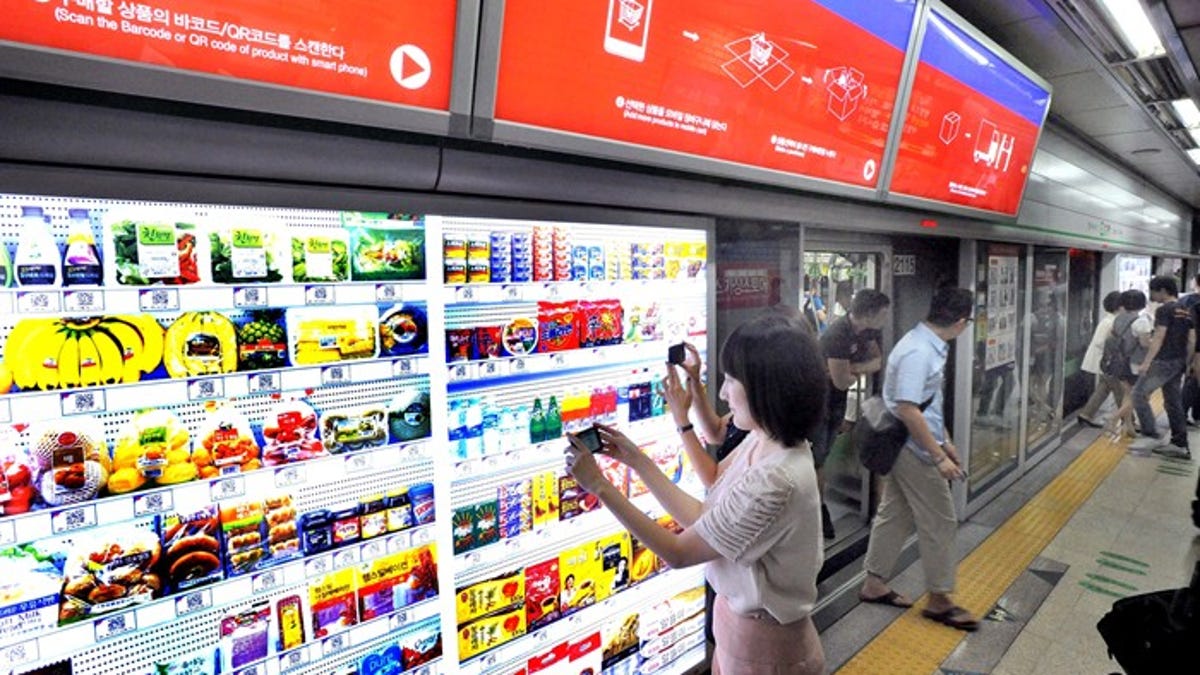Tesco trials virtual grocery store at U.K. airport
Gatwick airport outside London is the test site for the supermarket chain, which sees smartphone grocery shopping in your future.

U.K. supermarket chain Tesco has begun testing out a new kind of grocery shopping -- going all-virtual in Gatwick airport.
The BBC reports that Tesco has been pondering a familiar problem -- you go on holiday, kids in tow, but the practicalities of the return home are still on your mind. Will there be food in the house when you get back, and if not, can you face a trip to the supermarket?
In response, Tesco has decided to install a "virtual grocery store" in the departure lounge of London's Gatwick airport.
The virtual store has four interactive screens, which users can swipe between by hand, each displaying approximately 80 products. If travelers want to buy an item, they will need to download a dedicated mobile app and then scan each product's bar code with their smartphone.
Once the virtual shopping trip has been completed, holidaymakers can choose to have their purchases delivered on the day they arrive back in the country.
Mandy Minichiello, marketing manager for Tesco.com, told the BBC:
We don't think it's a gimmick -- it's a taste of the future. In 2016, about 90 percent of all mobiles will be smartphones. We're doing this as a trial to try to get some customer feedback. We're keen to make customers lives as easy as possible. Increasingly, they want to shop on the go.
The trial will continue in the U.K. for the next two weeks. Similar technology is already in use in South Korea, where Tesco has installed interactive billboards at subways and bus stops. The billboards display a range of groceries, which commuters can buy and have delivered to their home later by scanning the QR codes pictured beneath them. After initially running as an experiment, the billboards proved popular, and are now a permanent feature in South Korea.

